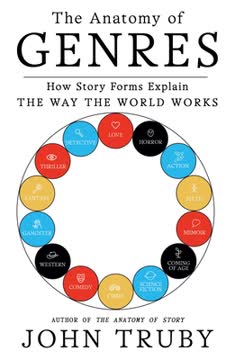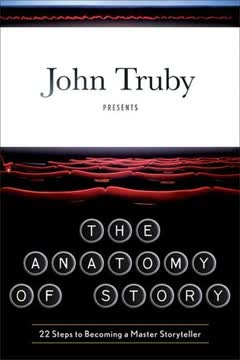Key Takeaways
1. Story is the essential human operating system for life.
Everything you need to know about life can be found in stories.
Stories define life. Humans are fundamentally storytelling animals. We use stories to learn, process the world, find our place, and pass down lessons across generations. Story is not just entertainment; it's how we make sense of existence and find meaning.
Beyond entertainment. While stories provide diversion, their deeper function is to encapsulate fundamental principles of the world and guide how we should live. This perspective reverses traditional hierarchies that place subjects like math and science above creative arts.
Universal building blocks. Story transcends specific domains like religion, business, or politics. These are simply different kinds of stories we tell ourselves and others to organize our lives and exercise influence. Understanding story provides a framework for navigating the world.
2. Genres are structured maps, each revealing a unique life philosophy.
Genres are types of stories: Detective, Love, Action, Fantasy, or Science Fiction, for example.
Unique worldviews. Each major genre offers a distinct window onto a particular aspect of the world and how best to confront it. They are philosophical lenses through which we can view life, providing different perspectives on challenges and how to live well.
Philosophical foundations. Genres aren't arbitrary categories; they express unique philosophies. For instance:
- Action: Success comes from taking action, not necessarily being morally right.
- Detective: Thinking successfully involves comparing different stories to find truth.
- Love: Happiness comes from mastering the moral act of loving another.
Deep structures. Beneath the surface elements (tropes), genres possess deep structures or "story systems." These systems, composed of specific plot "beats," express the genre's unique philosophy and resonate with audiences on a fundamental level.
3. Mastering genre beats is crucial for compelling stories and living well.
Each major genre has fifteen to twenty specialized “beats,” or key plot events, that determine that form.
Structural necessity. Genre beats are not optional tropes; they are the essential plot points that define a genre and make a story popular. Missing these core beats will disappoint genre fans who return for the specific emotional and structural payoff these sequences provide.
Story systems. These beats connect to form an entire story system that embodies a unique philosophy of life. The sequence of these beats is carefully crafted to lead the audience through the genre's specific dramatic and thematic journey, creating a powerful impact.
Applying lessons. Understanding genre beats is valuable beyond writing. By recognizing the patterns and philosophies embedded in different genres, we can apply their lessons to our own lives, using them as models for navigating challenges and making choices.
4. Modern storytelling thrives on mixing and transcending genres.
Popular stories from then on were going to be all about mixing genres.
Beyond single forms. While mastering one genre was once sufficient, today's successful stories typically combine two, three, or even four genres. This multi-genre approach offers audiences more complexity and excitement, a trend intensified since films like Star Wars.
Creating novelty. Mixing genres, especially those not typically combined (like Science Fiction and Caper in Inception), creates unique and compelling narratives that stand out. It requires knowing the beats of multiple genres and applying techniques across forms.
Rising above. Transcending a genre means going beyond simply hitting the required beats. It involves:
- Twisting the beats in unexpected ways ("bending the rules").
- Expressing the genre's deep life philosophy through theme.
- Exploring the fundamental "story forms of life" unique to the genre.
5. Genres embody fundamental "story forms of life" like art and philosophy.
The idea that the mind works through story leads to another revolutionary idea about transcending genres: each major human activity is its own story form.
Life as art. Major human activities like morality, culture, business, politics, and love are not separate from story; they are complex works of art expressed through dramatic form. Genres provide X-ray vision into these fundamental story forms of life.
Transcendent exploration. Transcendent stories explore these deeper "art forms of life" embedded within genres. For example:
- Horror explores Religion.
- Action explores Success (War, Sports).
- Crime explores Morality and Justice.
- Fantasy explores the Art of Living (Aesthetics).
Beyond technique. Understanding these underlying art forms elevates storytelling beyond mere technique. It allows writers to express powerful and complex themes, enriching the reader's life by offering profound models for grappling with philosophical issues.
6. Horror: Confronting death and the story of religion.
Horror is embedded within life itself.
Primal distinction. The Horror genre is founded on the most basic distinction governing human existence: life versus death. It forces us to confront our mortality and the terrifying idea of non-existence.
Psychological depth. While early Horror focused on the supernatural, modern Horror, influenced by Edgar Allan Poe, delves into the psychological. It explores the flaws of the human mind, our fundamental fears, and the "monster within" that leads to self-destruction.
Story of religion. Horror expresses the story of religion, which is humanity's attempt to defeat death and find immortality. It uses fear and punishment (hell) to compel adherence to a moral code, promising rebirth and everlasting life (heaven) as a reward.
7. Action & Myth: The paths of success, destiny, and the self.
Action is about being successful, not morally right.
Doing vs. Becoming. Action highlights the importance of taking action for success, equating becoming with doing. Myth, conversely, focuses on the journey to understand oneself and find one's destiny, equating becoming with self-discovery.
Warrior and Searcher. These genres feature archetypal heroes: the Action hero is the warrior, master of combat and competition; the Myth hero is the searcher, on a journey to uncover truth and identity. Both involve physical journeys that mirror internal growth.
Transcendent forms. Transcendent Action includes the Epic (Art of War) and games (Sports, Caper), abstracting competition. Transcendent Myth includes Creation Myths and the Epic (Art of History), exploring the development of culture and the self over a lifetime.
8. Crime & Comedy: Navigating morality, justice, and social absurdity.
Crime is fictional moral philosophy.
Societal rules. Crime is founded on the laws and moral codes necessary for society to function, exploring the conflict between individual desire and collective well-being. Comedy, conversely, highlights how society doesn't work, focusing on human incompetence and social absurdity.
Moral accounting. Crime is about balancing the moral ledger, ensuring actions are paid for and justice is served, often through the contest between criminal and lawman. Comedy uses everyday immoral actions and social gaffes to expose hypocrisy and the gap between ideal and real.
Transcendent critique. Transcendent Crime (Epic Tragedy, Black Comedy) delves into complex moral accounting over a lifetime and critiques systemic injustice. Transcendent Comedy (Black Comedy, Satire) uses absurdity and ridicule to critique societal values and systems.
9. Western & Gangster: The rise and fall of civilization and its corruption.
The Western is its own religion. It is America’s Creation Myth.
Building and Decay. The Western is a philosophy of history, depicting the rise of civilization from wilderness through the efforts of pioneers and the cowboy hero. The Gangster story, evolving from the Western, shows the corruption of this dream in the city, focusing on the decay of business and politics.
Frontier vs. City. The Western hero moves horizontally across the frontier, seeking freedom and building community (often reluctantly). The Gangster hero moves vertically up the social ladder in the city, seeking money and power through criminal organization.
Cautionary tales. Both genres, especially in their transcendent forms (Anti-Western, Gangster Epic), serve as cautionary tales. They expose the costs of progress, the loss of the natural world, and the inherent corruption that can plague societies built on unchecked ambition and materialism.
10. Science Fiction: Creating society, culture, and the future.
Science Fiction is concerned with how to create society, and in particular, how to create a better society.
Social engineering. More than any other genre, Science Fiction focuses on the relationship between the individual and society, exploring how social structures, culture, and technology shape human life and the potential for creating better worlds.
Beyond gods. Science Fiction often presents a worldview without divine intervention, using scientific theories and technological advancements to explore the laws and possibilities of the universe and human evolution. It asks how we can make the right choices now for a better future.
World-building. This genre excels at creating vast, detailed story worlds, often depicting dystopian futures as warnings or utopian visions as ideals. It highlights how technology is not separate from humanity but an extension of it, constantly reshaping who we are.
11. Detective & Thriller: The mind's search for truth and responsibility.
Detective fiction shows us how to think successfully by comparing different stories to learn what is true.
Epistemology in action. Detective stories are fundamentally about how we know the truth, dramatizing the process of investigation, observation, questioning, and logical deduction. They highlight the mind's brilliance in solving puzzles and uncovering hidden realities.
Truth and danger. Thrillers add the element of mortal danger to the search for truth, making the investigation a matter of life and death. They explore the fear inherent in uncovering secrets, especially when the opponent is intimate or the system is corrupt.
Transcendent mind. Transcendent forms (Cosmic Detective, Story of the Mind) delve deeper into the nature of truth, the mind itself, and human responsibility. They show how the search for external truth often leads to discovering internal flaws and the complex, subjective nature of reality.
12. Love: The art of happiness and intimate connection.
Love stories reveal that happiness comes from mastering the moral act of loving another person.
Community of two. The Love story focuses on the most intimate human society: the relationship between two people. It explores how individuals grow and find happiness by forming a deep connection and learning to balance personal needs with the needs of the other.
Art of connection. Love is presented as both a feeling and a skill that can be learned and mastered. It's the art of creating a shared life, requiring sacrifice, vulnerability, and a willingness to grow together through mutual support and understanding.
Highest capacity. While love in its basic form is essential for procreation, the genre explores its highest expression as the source of profound happiness and self-realization. Transcendent Love stories delve into the complexities of marriage and the lifelong process of becoming a true lover.
Last updated:
FAQ
1. What is Anatomy of Genres by John Truby about?
- Comprehensive genre analysis: The book provides an in-depth exploration of fourteen major storytelling genres, explaining their structures, themes, and how they reflect human life and society.
- Story as life philosophy: Truby presents genres as modern philosophies of life, showing how each genre expresses different aspects of being and becoming.
- Practical and theoretical guide: It combines practical story structure advice for writers with thematic insights for readers, helping both craft and understand complex narratives.
- Connection to human experience: The book argues that understanding story anatomy is about more than writing—it's about understanding how to live.
2. Why should I read Anatomy of Genres by John Truby?
- Master storytelling craft: The book equips writers with detailed techniques to write compelling stories that resonate emotionally and intellectually, covering everything from character development to plot structure.
- Understand story’s power: Readers gain insight into how stories shape human consciousness and culture, making it valuable for anyone interested in narrative’s role in life and society.
- Genre as philosophy: Truby reveals how genres embody moral and social codes, helping readers and writers appreciate the deeper meanings behind popular stories.
- Broad applicability: The analysis applies across novels, screenplays, and other media, making it a versatile resource for storytelling success.
3. What are the key takeaways from Anatomy of Genres by John Truby?
- Genres as life philosophies: Each genre expresses a unique worldview and philosophy, offering models for living and understanding human experience.
- Story structure mastery: Success in storytelling comes from mastering the deep structure and specialized beats of each genre, not just using surface tropes.
- Mixing and transcending genres: Popular stories often combine multiple genres, and the best writers transcend formula by twisting beats and expressing deeper themes.
- Stories shape and reflect life: Truby emphasizes that stories are not just entertainment—they define how we live, think, and relate to others.
4. What are the seven major story structure steps in Anatomy of Genres by John Truby?
- Weakness-Need: The hero starts with a deep personal flaw or weakness that must be overcome for growth, setting the emotional foundation.
- Desire: The hero pursues a valuable goal outside themselves, driving the plot and creating narrative momentum.
- Opponent: The hero faces an obstacle or antagonist, often revealing that the greatest challenge is internal, which creates tension.
- Plan, Battle, Self-Revelation, New Equilibrium: The hero devises a strategy, confronts the opponent in a climax, gains insight into themselves, and ends with a changed world and self.
5. What are the fourteen major genres discussed in Anatomy of Genres by John Truby, and why are they important?
- Comprehensive genre list: Truby covers genres such as Horror, Action, Myth, Memoir, Love, Science Fiction, Crime, Comedy, Western, Gangster, Fantasy, Detective, Thriller, and Coming-of-Age.
- Genres as story systems: Each genre has a deep structure with specialized plot beats that determine its form and success.
- Genres as life philosophies: Each genre offers a unique "Mind-Action" view, providing a philosophy for living well and understanding the world.
- Portals to human experience: Mastering genres enriches both storytelling and life understanding, as each genre opens a different portal into human existence.
6. What are the three unwritten rules of storytelling according to John Truby in Anatomy of Genres?
- Buy and sell genres: The storytelling business revolves around mastering and writing stories in genres that the market wants, focusing on deep structure over surface tropes.
- Combine multiple genres: Most popular stories mix 3-4 genres, requiring writers to know and skillfully weave the beats of each to avoid chaos.
- Transcend the primary genre: Writers must twist beats, express the genre’s life philosophy in the theme, and explore unique story forms to rise above formulaic storytelling.
7. How does John Truby define and structure the Horror genre in Anatomy of Genres?
- Life vs. death focus: Horror centers on the binary opposition of life versus death, exploring the human struggle to confront mortality.
- Psychological depth: Modern Horror emphasizes psychological terror, focusing on the mind’s flaws and fears rather than just supernatural threats.
- Ghost and monster roles: The "ghost" represents past trauma haunting the hero, while the "monster" is the external manifestation of internal fears, often acting as the hero’s double.
- Horror as religion story: The genre expresses humanity’s attempt to defeat death and find immortality, often through confronting moral and psychological sins.
8. How does Anatomy of Genres describe the Action genre and its worldview?
- Success through doing: Action is about achieving success by taking action, emphasizing competition, fighting, and overcoming external threats.
- Existential struggle: The genre portrays life as a daily battle where freedom comes from winning fights and mastering combat.
- Hero as fighter: The Action hero embodies courage and will to greatness, often facing moral complexity regarding the cost of victory.
- Key story beats: The structure includes a defining crisis, dangerous world, strategic planning, and a final battle with a moral argument.
9. What is the significance of the Myth genre in Anatomy of Genres by John Truby, and how does it differ between Male and Female Myth?
- Myth as life process: Myth places the self within society, mapping human relationships and the journey of self-understanding over a lifetime.
- Theme of immortality: The central theme is the search for immortality, often expressed through a physical journey mirroring internal growth.
- Male vs. Female Myth: Male Myth is linear, focusing on conquest and public revelation, while Female Myth is cyclical, emphasizing growth, rebirth, and harmony with nature and community.
- Cultural and thematic shift: The transition from Male to Female Myth marks a profound cultural shift, offering new models for storytelling and living.
10. How does Anatomy of Genres by John Truby approach Science Fiction and its unique storytelling elements?
- Society and technology focus: Science Fiction explores how society and culture operate, and how technology influences human happiness and freedom.
- Social fractals and evolution: The genre uses the concept of social fractals—patterns repeated at various scales—and tracks society’s evolution through stages like wilderness, village, city, and oppressive city.
- Technology as art and consciousness: Technology is seen as both a practical art and an expression of human consciousness, with "fulcrum" technologies shaping the story world.
- Mythic structure and moral challenge: Science Fiction often uses Myth structures, linking personal and societal evolution, and challenges the hero with moral flaws related to humanity.
11. What is the role of moral argument and personal codes in the Crime and Detective genres in Anatomy of Genres?
- Moral universe and responsibility: Characters are born into a moral universe with relative values, where actions have consequences for others.
- Personal moral codes: Both heroes and criminals operate by personal codes, balancing self-interest with concern for others, which evolve through the story.
- Good vs. right conflict: The central conflict is between pursuing personal good and doing what is socially just, creating complex ethical dilemmas.
- Truth and justice: The Detective genre, in particular, emphasizes the pursuit of truth as foundational to morality, justice, and freedom.
12. How does Anatomy of Genres by John Truby define the Love story and its transcendent forms?
- Love as union: The Love story tracks two people whose attraction leads to forming a “marriage,” emphasizing mutual growth through intimate community.
- Lover as opponent: The main opponent is often the lover themselves, as each resists sacrificing individuality for the relationship, creating ongoing conflict.
- Transcendent forms: The book explores the Tragedy of Traditional Marriage, Comedy of Remarriage, and True Love and Art of Marriage, each addressing how to live well together long-term.
- Core challenge: These stories examine how to overcome differences, mistakes, and fears to achieve lasting love, transforming passion into an enduring way of life.
Review Summary
The Anatomy of Genres receives mixed reviews. Many praise its depth and insights into storytelling, finding it useful for writers and filmmakers. Critics appreciate Truby's passion and the book's ambitious scope. However, some find it overly long, poorly organized, and difficult to navigate. The writing style is criticized as arrogant and repetitive. Readers note the book's focus on movies rather than literature. While some consider it a valuable resource, others find it less practical than Truby's previous work, The Anatomy of Story.
Similar Books
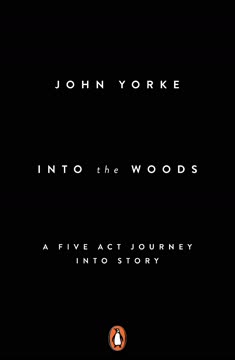
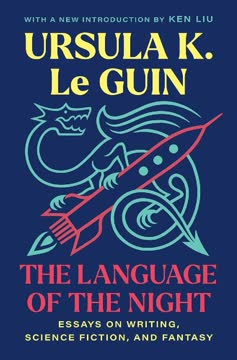
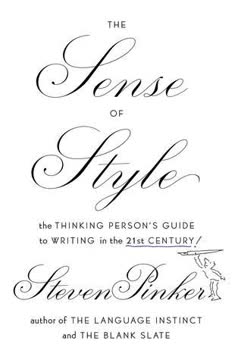
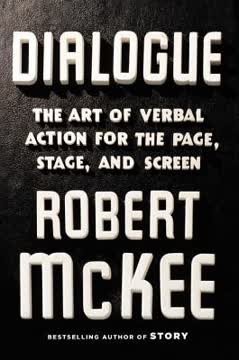
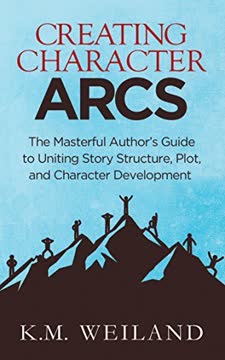
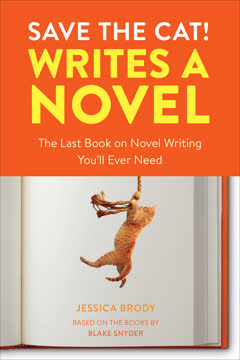
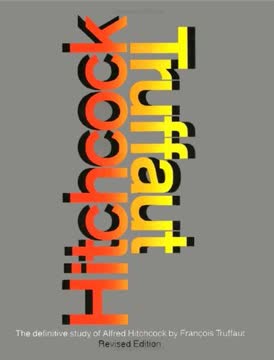
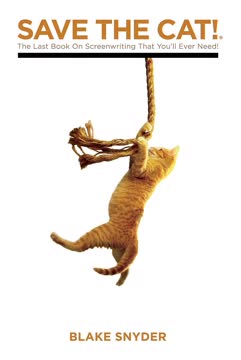
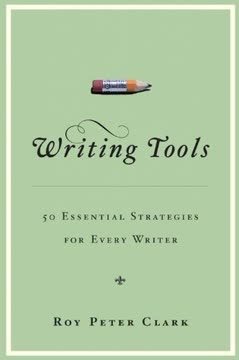
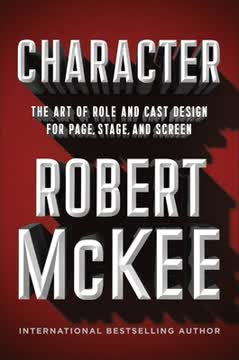
Download PDF
Download EPUB
.epub digital book format is ideal for reading ebooks on phones, tablets, and e-readers.
